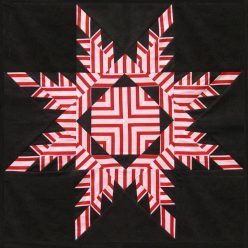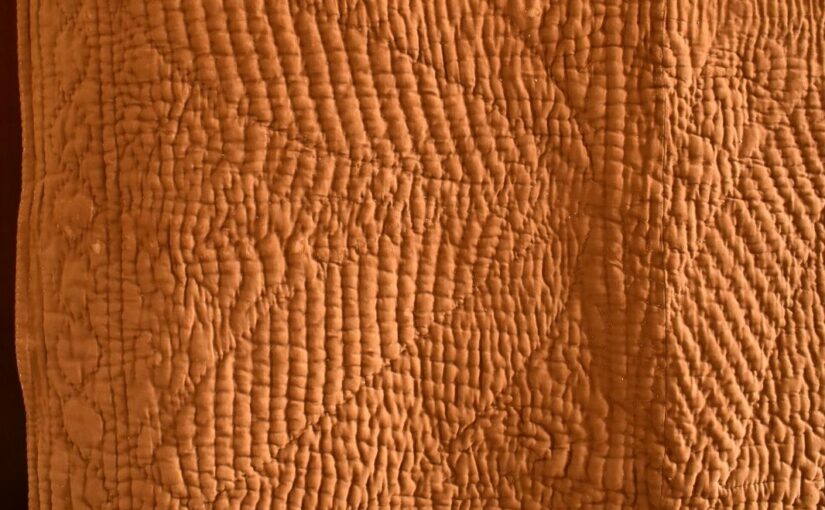This humble Welsh wholecloth is nutmeg brown cotton sateen on one side, and deep cream on the other. It probably dates between 1890 and 1910.
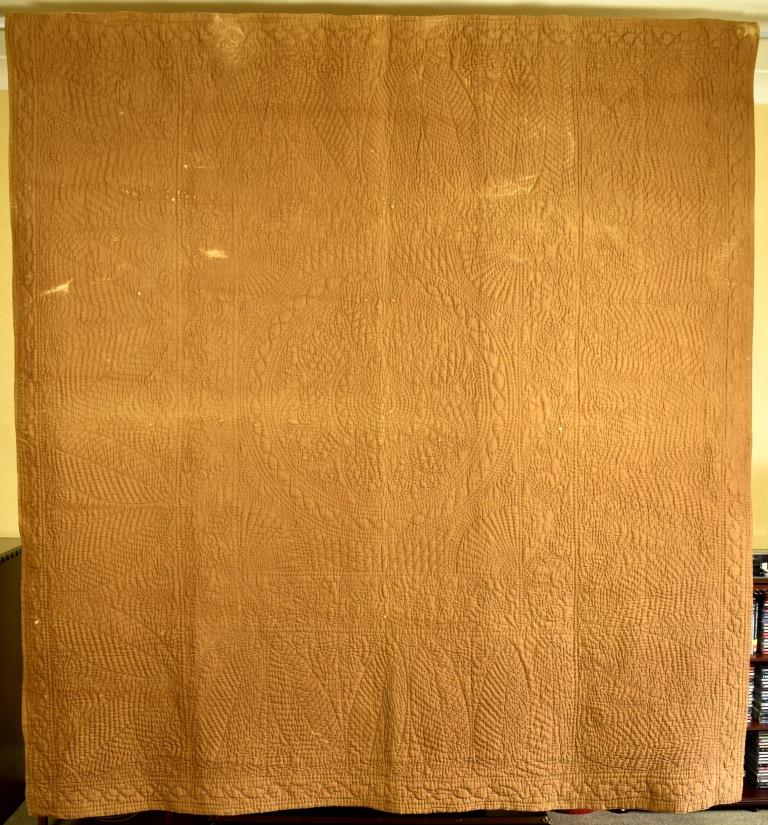
This shows the two fabrics side by side:
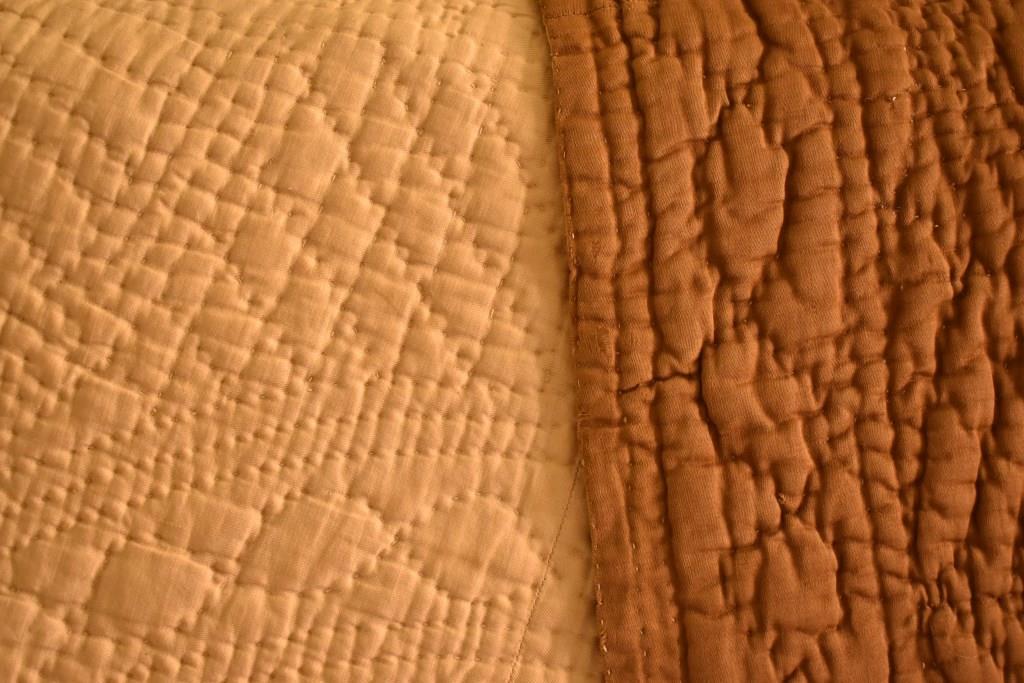
It is filled with an old blanket, with some additional sheep’s fleece as wadding. This makes the quilt quite heavy with little loft to the quilting – which makes the quilting designs a little difficult to make out in places.
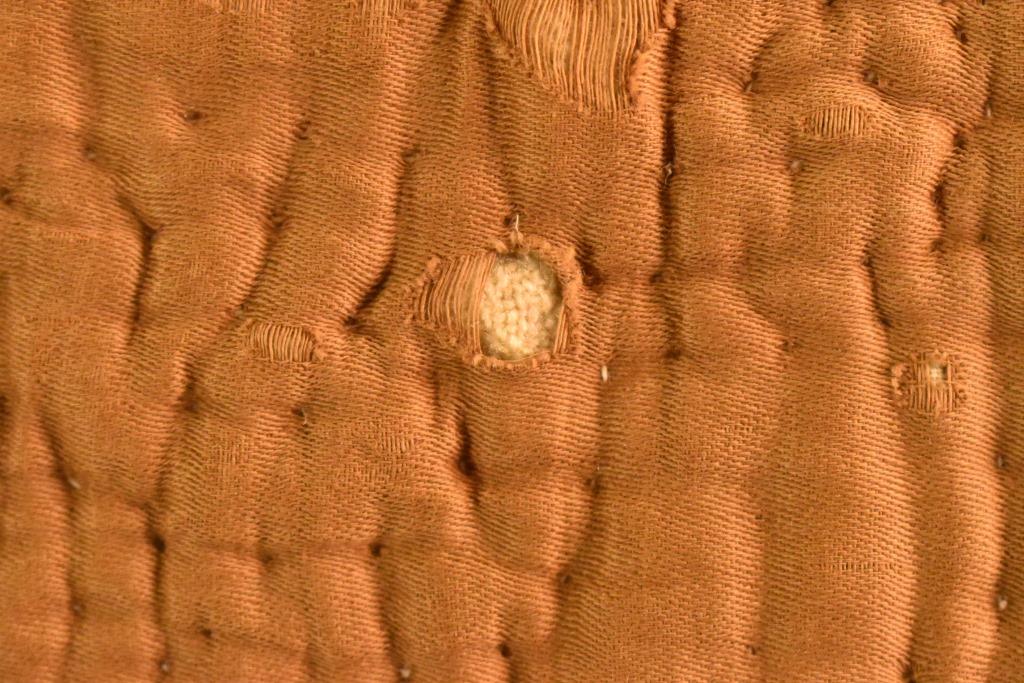
It has the typical Welsh layout of a circular ‘coin’ at the centre with double lines separating the borders from the central area.
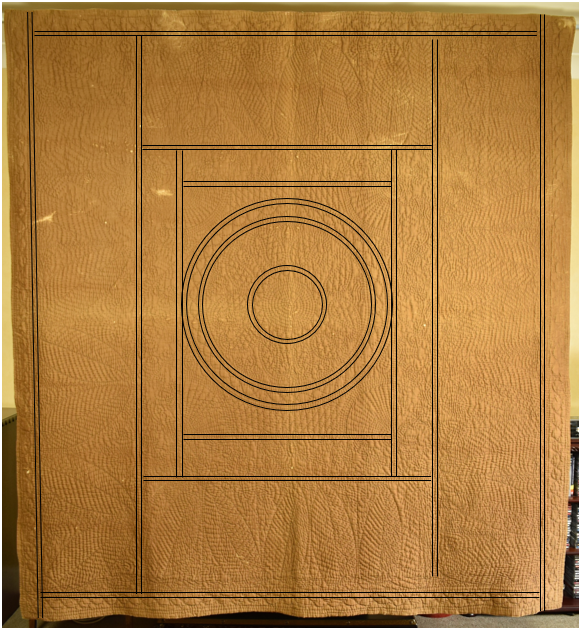
The central design is in the form often called a ‘coin’ – here, it is 29” (74 cm) across. This is made of several patterns arranged in rings, divided by double or triple lines

The very centre (7” 18 cm across) is filled with many concentric rings of closely spaced lines. These are surrounded by a simple 1” (2.5 cm) zigzag, and then two more closely spaced lines.
After that are found pairs of paisley motifs. On this pair, and on some of the others, a spiral can be seen dropping down from the tip of each paisley if you look carefully. The paisley or ‘pear’ is a traditional motif found in Welsh quilting. The original ‘boteh’ design developed in Persia, but became popular in the UK in the 18th & 19th centuries.

Around the circular coin, four 8” (20 cm) fans fill the corners of the central square. Fans are a typical Welsh motif, particularly in this position. On this quilt, the fan filling is quite simple with radiating spokes – more elaborate fans can be seen in the Welsh cotton wholecloth by Q. L. Jones

The unknown maker will have drawn around templates to mark her quilting design; studying the quilt closely shows that she has needed to adjust the placings of the leaves on the outer border to fit in a whole number.
On two opposite borders, the large beech leaves are placed regularly forming a zig-zag. However, the leaves on the two other borders are placed at increasingly steep angles.
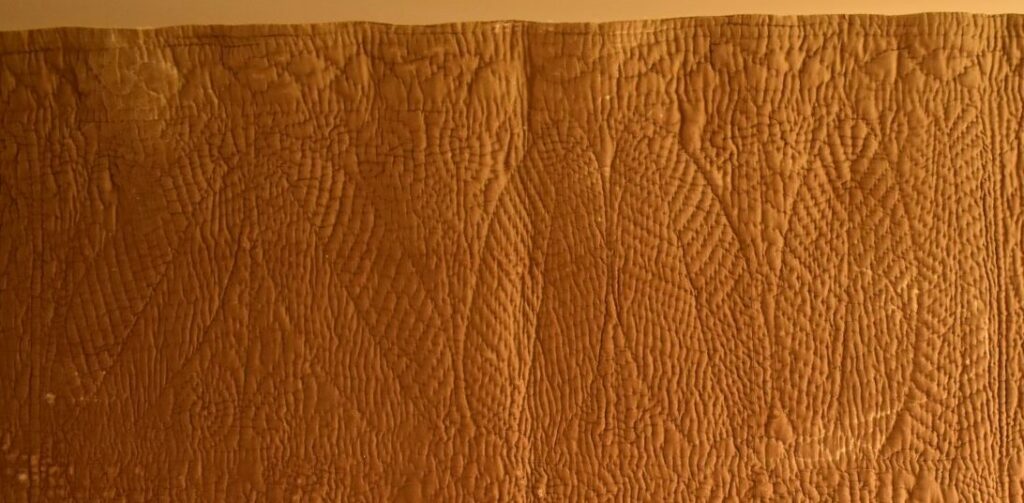
It is proposed that the quiltmaker was easily able to plan the even positioning of the leaf template eight times across the first section to be worked to form the first border, as this was all visible at the same time. When this section was rolled on, the quilter placed the first two leaves of each side border at an angle to match the zig-zag arrangement that had just been worked. However, when the quilt was rolled on again, the newly exposed section available for the remainder of the side border was too large for two leaves, but not large enough to accommodate a further three leaves at the same angle. So, the decision was made to squeeze in three leaves at a tighter angle.
If you are interested in discovering more about the ‘Accommodations’ that quilters made when marking and stitching their quilts in the frame, then look at the Border Corner quilting designs page.
This quilt is finished with a rather irregular single cable, and a butted edge, finished with hand stitching.

More Welsh quilts can be found in the Antique quilts – Wholecloth Quilts section
